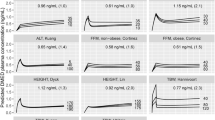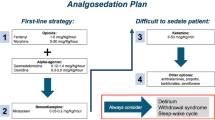Abstract
Background and objective: Propofol produces anaesthesia with rapid recovery but also causes pain or discomfort on injection. The effect of remifentanil in prevention of propofol-induced injection pain has been demonstrated in earlier studies. However, sufentanil, an opioid analgesic, has not been evaluated as an agent for managing pain on injection of propofol. In this study we aimed to compare the efficacy of remifentanil and sufentanil for the prevention of propofol-induced pain.
Methods: This double-blind, placebo-controlled clinical study was carried out from July 2006 to February 2007, and included patients who were candidates for elective surgery in a university hospital. From 92 American Society of Anesthesiologists (ASA) status I–II adult patients, 80 were randomly assigned to four groups of 20 each. Patients received 2 mL of sufentanil 0.01 mg, 2 mL of remifentanil 0.01 mg, 2 mL of remifentanil 0.02 mg, or 2 mL of saline 60 seconds prior to administration of 5 mL of propofol 1%. Patients were asked prior to losing consciousness whether they felt any pain due to propofol injection, and their pain scores were evaluated on the four-point scale of Ambesh et al.
Results: The incidence of pain was significantly lower in the remifentanil 0.02-mg group, remifentanil 0.01-mg group and sufentanil group compared with the saline group (40%, 70%, 75% and 100%, respectively, p < 0.05). Median pain intensity scores were significantly lower in the group receiving remifentanil 0.02 mg than in the sufentanil group (0 and 1 respectively, p < 0.05). The median intensity of propofol-induced pain was statistically similar between the groups receiving sufentanil or remifentanil 0.01 mg and the placebo group (1, 1 and 1, respectively, p > 0.05).
Conclusion: Remifentanil 0.02 mg administered over 60 seconds before propofol administration is more effective than sufentanil 0.01 mg, remifentanil 0.01 mg or placebo administered 1 minute prior to propofol in reducing the incidence and intensity of injection pain.




Similar content being viewed by others
References
Smith I, White PF, Nathanson M, et al. Propofol: an update on its clinical use. Anesthesiology 1994; 81: 1005–43
Tan CH, Onsiong MK. Pain on injection of propofol. Anaesthesia 1998; 53: 468–76
Nathanson MH, Gajraj NM, Russell JA. Prevention of pain on injection of propofol: a comparison of lidocaine with alfentanil. Anesth Analg 1996; 82: 469–71
Picard P, Tramer MR. Prevention of pain on injection with propofol: a quantitative systematic review. Anesth Analg 2000; 90: 963–9
Macario A, Weinger M, Truong P, et al. Which clinical anesthesia outcomes are both common and important to avoid? The perspective of a panel of expert anesthesiologists. Anesth Analg 1999; 88: 1085–91
Liljeroth E, Grauers A, Akeson J. Pain on injection of propofol with or without infusion of carrier fluid. Acta Anaesth Scand 2001; 45: 839–41
Stokes DN, Robson N, Hutton P. Effect of diluting propofol on the incidence of pain on injection and venous sequelae. Br J Anaesth 1989; 62: 202–3
McCrirrick A, Hunter S. Pain on injection of propofol: the effect of injectate temperature. Anaesthesia 1990; 45: 443–4
Doenicke AW, Roizen MF, Rau J, et al. Reducing pain during propofol injection: the role of the solvent. Anesth Analg1996; 82: 472–4
Helmers JH, Kraaijenhagen RJ, Van Leuwen L, et al. Reduction of pain on injection caused by propofol. Can J Anaesth 1990; 37: 267–8
Fletcher JE, Seavell CR, Bowen DJ. Pretreatment with alfentanil reduces pain caused by propofol. Br J Anaesth 1994; 72: 342–4
Glass PS, Gan TJ, Howell S. A review of the pharmacokinetics and pharmacodynamics of remifentanil. Anesth Analg 1999; 89(4 Suppl.): S7–14
Roehm KD, Piper SN, Maleck WH, et al. Prevention of propofol-induced injection pain by remifentanil: a placebo-controlled comparison with lidocaine. Anaesthesia 2003; 58: 165–70
Kirdemir P, Gogus N. Comparison of various drugs and techniques in the prevention of propofol injection pain. Gulhane Med J 2002; 44: 149–53
Ambesh SP, Dubey PK, Sinha PK. Ondansetron pretreatment to alleviate pain on propofol injection: a randomized, controlled, double-blinded study. Anesth Analg 1999; 89: 197–9
Hildebrandt M, Bender R, Gehrmann U, et al. Calculating confidence intervals for impact numbers. BMC Med Res Methodol 2006; 6: 32
Pang WW, Mok MS, Huang S, et al. The analgesic effect of fentanyl, morphine, meperidine, and lidocaine in the peripheral veins: a comparative study. Anesth Analg 1998; 86: 382–6
Scott RP, Saunders DA, Norman J. Propofol: clinical strategies for preventing the pain of injection. Anaesthesia 1988; 43: 492–4
Coderre TJ, Katz J, Vaccarino AL, et al. Contribution of central neuroplasticity to pathological pain: review of clinical and experimental evidence. Pain 1993; 52: 259–85
Pascale P, Tramer MR. Prevention of pain on injection with propofol: a quantitative systematic review. Anesth Analg 2000; 90: 963–9
Doenicke AW, Roizen MF, Rau J, et al. Pharmacokinetics and pharmacodynamics of propofol in a new solvent. Anesth Analg 1997; 85: 1399–403
Rau J, Roizen MF, Doenicke AW, et al. Propofol in an emulsion of long- and medium-chain triglycerides: the effect on pain. Anesth Analg 2001; 93: 382–4
Bachmann-Mennenga B, Ohlmer A, Heesen M. Incidence of pain after intravenous injection of a medium-/long-chain triglyceride emulsion of propofol: an observational study in 1375 patients. Arzneimittelforschung 2003; 53: 621–6
McCulloch MJ, Lee NW. Assessment and modification of pain on induction with propofol (Diprivan). Anaesthesia 1985; 40: 1117–20
Hillier SC. Monitored anesthesia care. In: Barash PG, Cullen BF, Stoelting RK, editors. Clinical Anesthesia. 3rd ed. Philadelphia (PA): Lippincott-Raven, 1996: 1159–71
Johnson RA, Harper NJN, Chadwick S, et al. Pain on injection of propofol: methods of alleviation. Anaesthesia 1990; 45: 439–42
Fujii Y, Shiga Y. Flurbiprofen axetil preceded by venous occlusion in the prevention of pain on propofol injection in the hand: a prospective, randomized, double-blind, vehicle-controlled, dose-finding study in Japanese adult surgical patients. Clin Ther 2005; 27: 588–93
Tan CH, Onsiong MK, Kua SW. The effect of ketamine pretreatment on propofol injection pain in 100 women. Anaesthesia 1998; 53: 296–307
Agarwal A, Dhiraj S, Raza M, et al. Vein pretreatment with magnesium sulfate to prevent pain on injection of propofol is not justified. Can J Anaesth 2004; 51: 130–3
Pang WW, Huang PY, Chang DP, et al. The peripheral analgesic effect of tramadol in reducing propofol injection pain: a comparison with lidocaine. Reg Anesth Pain Med 1999; 24: 246–9
Sebel PS, Hoke JF, Westmoreland C, et al. Histamine concentrations and hemodynamic responses after remifentanil. Anesth Analg 1995; 80: 1990–3
Song D, Hamza M, White PF, et al. The pharmacodynamic effects of a lower-lipid emulsion of propofol: a comparison with the standard propofol emulsion. Anesth Analg 2004; 98: 687–91
Roerig DL, Kotrly KJ, Vucins EJ, et al. First pass uptake of fentanyl, meperidine, and morphine in human lung. Anesthesiology 1987; 67: 466–72
Acknowledgements
The authors gratefully acknowledge the assistance of Dr Parvin Sajedy and Dr Zeinab Rajabi for data collection. No sources of funding were used to assist in the preparation of this study. The authors have no conflicts of interest that are directly relevant to the content of this study.
Author information
Authors and Affiliations
Corresponding author
Rights and permissions
About this article
Cite this article
Honarmand, A., Safavi, M. Prevention of Propofol-Induced Injection Pain by Sufentanil. Clin. Drug Investig. 28, 27–35 (2008). https://doi.org/10.2165/00044011-200828010-00004
Published:
Issue Date:
DOI: https://doi.org/10.2165/00044011-200828010-00004




